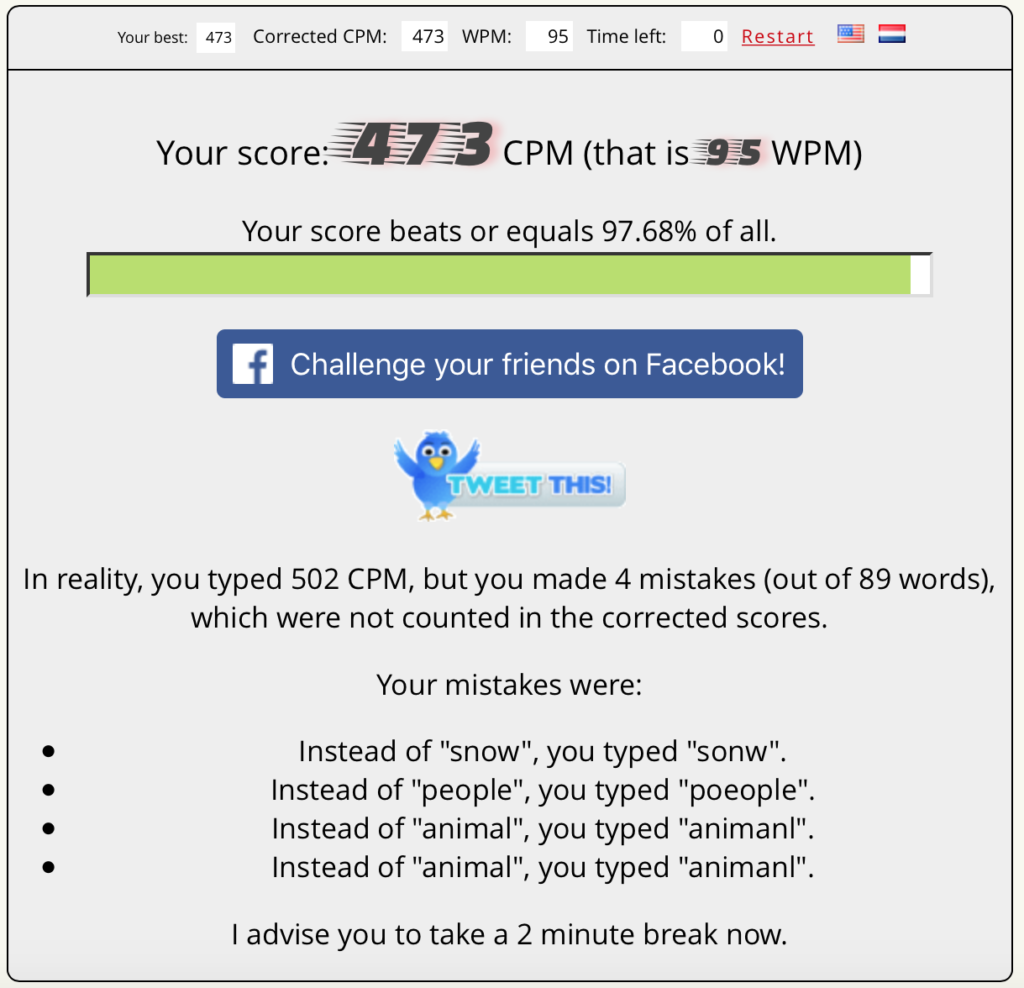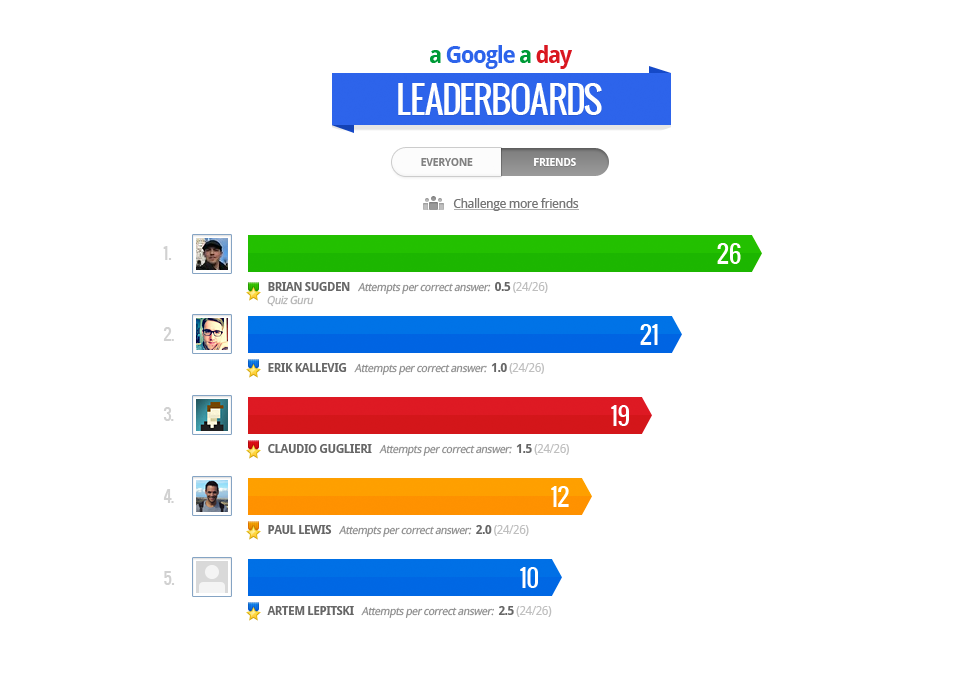What would you do if you could write 10,000 words a day to kick you content into high gear?
Would you write five lengthy blog posts? How about an e-book? Or maybe high-converting sales copy for multiple landing pages?
Writing 10,000 words a day seems more than challenging. Writing 10,000 words a day seems nearly impossible. However, it is entirely possible. I can write 10,000 words during most weeks.
When I’m feeling really good, I can write 10,000 words in one day. At that rate, I could write 70,000 words per week, or 3,650,000 words every year.
I don’t consistently write at this pace, but when I do write 10,000 words in a day, it’s an awesome feeling. If I manage to write 10,000 words in one day, I can dedicate several more days to content marketing.
With the right work ethic, you can write 10,000 words in less than 12 hours.
Not Your Everyday Writing Goal
As I mentioned earlier, I don’t write 10,000 words every single day of the year. I do it on occasion. The problem with a goal like this is that some people will get tempted to put off their writing and go all-out on one day of the week (or, even worse, once per month).
Writing 10,000 words in one day, but forgetting about the other days of the week, will set you up for ruin. You won’t develop a habit for writing, and you’ll grind through the process instead of enjoying the journey.
If you constantly pressure yourself with this goal, you risk getting overwhelmed and despising writing all together. Before you consider writing 10,000 words a day, you need an established habit.
Writing 500 words per day is a great starting point. As you establish the habit, you can look deeper at some of the other techniques writers use. Once you merge your own habits with the analysis of other writer’s habits, you’ll discover a magic formula.
My absolute minimum goal is to write 1,500 words per day, although I usually finish most days at 2,000-3,000 words. The reason I don’t write 10,000 words a day every time is because I have other responsibilities for my brand. Once I write the content, I have to spend even more time on marketing.
This is why I rarely type 10,000 words in a given day. If you have the writing habit built-in, then you’re ready for your first 10K word day. I advise making a goal for 10K words in a day only twice per month. If you do anymore than that, you risk burnout, but if it works for you, then more power to you!
How To Get The Writing Habit Down
If you don’t have a writing habit, you need to start developing it. Five-hundred words per day is a great starting point. But how do you reach it? For some people, writing 500 words seems just as impossible.
Up to now, I’ve written exactly 500 words and didn’t even notice. It took me just a few minutes. Writing 500 words isn’t that easy, but once you’ve been writing millions of words for your blog posts and books, writing 500 words in one sitting is light work.
Let’s get back to habit development. According to science, it takes 66 days for any activity to become a habit. If you write 500 words every day for two months, you can easily write 500 words anytime.
But instead of writing 500 words per day until it becomes a habit, you need to gradually increase your word count. After a week of writing 500 words, challenge yourself to go a little higher. Don’t make a big jump in the beginning. Choose a more manageable jump such as 550 words per day.
You could even increase your word count to 510 words per day. Small increases add up, and soon enough, you will effortlessly write thousands of words on any given day. It all starts with your daily habits.
Right now, you might be creating a mental roadblock in front of your writing habit. It’s something you know you want or need to do, but for some reason, you keep putting it off.
In The Productivity Project, Chris Bailey lays out six triggers for procrastination. When you look at this list, ask yourself if any of these triggers impact you when you write:
- Boredom
- Frustration
- Difficulty
- Unstructured
- Lacks personal meaning
- No intrinsic reward (it’s not fun)
You can change your results by making these unattractive triggers more attractive. For instance, if your writing lacks personal meaning, change what you write about so it aligns with your interests, which will make it easier for you to write 500 words each day (or more).
I write about topics that I care about, and enjoy writing blog posts like this because they help the people that I’m trying to reach. I don’t enjoy writing history papers, for example, because 99% of them are forced assignments necessary for the grade.
** Want to develop your writing habit and make money from your books and free content you put out? Schedule a free strategy call with me to see if we are a good fit. **
Calculate Your WPM
Let’s shift gears back to your first 10K word day. The next bit of information you’ll need is your WPM. This popular acronym stands for Words Per Minute in the writing community.
WPM is an assessment of how many words you can type in a given minute. Using your WPM, it’s easy to calculate your WPH. Just multiply your WPM by 60. For example, if you type at 40 WPM, then your WPH is 2,400 words.
With the average WPM lurking between 38-40, the 500 word goal is easily attainable. It’s an average WPM. For most people, it will only take 12.5 minutes or less to finish writing a 500 word blog post (assuming the idea and outline are already in place).
Knowing your WPH allows you to determine how much time you need to write 10,000 words. With the average being 40 WPM (and therefore 2,400 WPH), you only need to type for 4 hours and 10 minutes to reach the 10,000 word milestone.
Of course, this is assuming you consistently type at 40 WPM from start to finish. At some points, you’ll be thinking of different ideas and possibly doing research to verify certain facts as you write your content.
In that case, it will take longer than 4 hours and 10 minutes. If you factor in everything else that can possibly happen (including idea development while writing), you’ll find yourself at the 5-5 1/2 hour range for 10,000 words in a day.
Mathematically speaking, none of this seems as scary as before, right? I could literally write 10,000 words every day of the year, but five hours of writing each day without any marketing won’t bring forth a content brand.
This entire example is based on the average WPM. You may be slightly above or below the average WPM. The only way to determine your status is to start a typing test. Typing tests only last a few minutes; what type what shows up on the screen, and you get your WPM in real-time.
The typing test lasts for a minute, and then you get to see your results.
Here’s mine:

For this speed test, I typed 95 words per minute, which came from countless hours of practice. At this rate, I could write 5,700 words in one hour and finish writing 10,000 words in just two hours.
While this data is skewed since the words are already provided (and you’ll have to think of fresh ideas to write about), knowing your WPM gives you a rough idea of how much time it will take for you to write 10,000 words. Just tack on an extra hour to factor in time for idea generation.
On this WPM test, you’re also likely to make mistakes as I did since the words are listed one after the other instead of provided in clear sentences.
While writing takes time, editing and revising can take even longer. You can hire an editor, ask a friend for help, or edit the content yourself. With all three of these approaches, there will be typos in your work. It’s practically unavoidable unless you meticulously look it over for several months or even a year depending on how long your content is.
At that point, it could have been published in an imperfect form but attracted more people to your brand.
Combining Attention & Energy
The timing of your work is just as important as the amount of time you invest in your work. Let me share an example with you:
Writer A goes through the entire day feeling exhausted. She still feels exhausted but pulls out her computer anyway and starts typing at 10 pm.
Writer B wakes up at 6 am and starts writing almost immediately. After some typing, she takes a break, eats a healthy breakfast, and then continues typing for another hour.
Which writer seems more productive to you? I’d go with Writer B any day of the week. Both writers are committed and willing to write for several hours. The difference is that one feels charged up while the other feels exhausted.
Your body and mind are part of you, and they play a big role in your productivity. If you feel distracted, that will negatively affect your productivity. There’s no question about it.
Most people focus on time as a measurement of productivity. If you worked for six hours today, you were more productive than when you only worked for five hours, right?
That approach is all wrong.
It’s not just a matter of how much time we put into our work, more specifically, it’s about what kind of time we’re putting into our work. Are you putting quality minutes into your work, or do you struggle through the day eager to boast about how much work you did later?
Circling back to The Productivity Project, Chris Bailey also mentions biological primetime. Everyone has a biological primetime, the timeframe in which it’s easiest for us to enter our working flow. For me, my biological primetime is early in the morning. For others, their biological primetime is in the afternoon or evening.
Think about how you work to determine your biological primetime. That is when you need to write your content. During this primetime, it’s much easier to write 10,000 words a day.
To actually find your primetime, you need to track your entire day, from what tasks you completed to how often you procrastinated. If you do this for a week, you will discover your biological primetime.
Once you know your primetime, you can reallocate your tasks so your high-value tasks (i.e. writing 10K words) get distributed within your biological primetime. That way, your attention and energy are properly focused on the work that matters most when you’re at your optimal level of productivity.
Not only should you track your time to discover your biological primetime, you should also learn a lot about yourself. You’ll learn how you spend your time and how you procrastinate. You can more easily weed out the bad activities so you can focus more of your time, attention, and energy on the tasks that create the biggest impact.
Space Everything Else Out Of Your Biological Primetime
When you keep track of your time, you’ll discover which tasks you do during your biological primetime. Most people discover that they’re making a big blunder within this golden opportunity.
If you check your stats, read the news, or scroll through Facebook during these golden hours, you are restricting your potential. That is the time you should focus on writing content.
Based on how you track your time, you’ll determine different distractions that can get in your way. Email and the internet are two of the many distractions that call us when we are trying to pursue our work. Anticipate distractions like these and eliminate them.
When I write a blog post, I’m almost never on the internet. The only time I use the internet while writing a blog post is when I’m doing research. I find the right time to mention someone else’s article. All I have to do is get the link, and that’s the only time I use the internet while blogging.
Oh, and I never see my Mail icon when I’m writing blog posts. I remove that app from my dashboard and only bring it back when I’m done writing.
Plan Out Your Content In Advance
I keep score of my blog posts’ lengths as I write them. Right now, this blog post is a little over 2,000 words long. In the past, I would struggle to get past 1,000 words with a blog post like this.
I might get past 1,000 words on a post, but not by much.
I always planned out my content in advance, even when it felt like writing massive blog posts was challenging. Back then, my outline was limited. I identified the blog post title and which tactics I would discuss.
Now I use the Socratic Outline for all of my blog posts. The Socratic Outline is like a traditional outline with a twist. You act as the reader and type questions the reader would have. For each tactic I discuss, I type at least three questions that the reader might ask.
For a blog post on getting more Twitter followers, one tip would be “Interact with your audience.” Here are some questions people may have:
- How do I interact with my audience?
- What do I say?
- How do I continue the conversation?
Instead of having five ideas within a blog post containing five tactics, I now multiply that total to 15 ideas within the same blog post containing the same five tactics. The more ideas you have to play with in your writing, the easier it is to write 10,000 quality words each day.
Anyone can type “very, very, very” 10,000 times. Planning out your content in advance allows you to develop the skill of writing quality words in massive quantities.
The Socratic Outline makes long-form content much easier to produce.
Change Your Environment
The tactics mentioned so far will give you the skills and mindset needed to write 10,000 words in under 12 hours. However, your environment is also a critical factor. When I first wrote this blog post, I mentioned that we all have a biological primetime. We are more productive during certain times of the day than others.
I want to take biological primetime one step further. Your biological primetime differs based on the environment you are in. At home, my biological primetime is the morning. Towards the evening, especially after 5 pm eastern, my productivity drops.
The biological primetime for my productivity at home is in the morning.
That’s why I interview most of my podcast guests in the evening. I’m not as productive at writing in the evening, but I can hold great conversations during that time.
Sometimes, when I don’t have an interview, I’ll go to a local bookstore in the evening to become more productive.
My productivity spikes in the new environment because my environment has changed. Your environment affects your biological primetime. I’m more productive at a local bookstore during the evening, and I only create content in that bookstore. I’m not doing anything else at that time.
I do all of the tech related work in the morning (create landing pages, check email sequences, etc.) and create as much content as my heart desires.
If your productivity is lagging at certain times of the day, the best solution is to change your environment. Then, you change your results.
In Conclusion
Writing 10,000 words a day is a daunting task, especially if you do it consistently. However, if you write 10,000 words two days each month, you’ll add an extra 20,000 words to your monthly total.
Those 20,000 words can provide you with several blog posts, books, and other forms of content. As you continue writing every day, you’ll have an easier time writing high quality words in massive quantities.
Share This Post With Your Friends
How many words do you write each day? What are your thoughts on the 10K word day? What’s your plan to write more content? Have a question for me?
Leave me a comment. I read them all 🙂
And if you know anyone else who needs this burst of insight, make sure you pass it on.
[Tweet “How To Write 10,000 Words In Less Than 12 Hours.”]
** Want to make money from your writing? Schedule a free strategy call with me to see if we are a good fit. **


